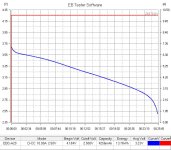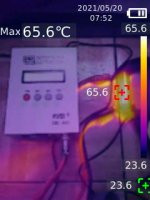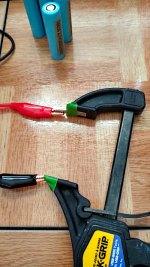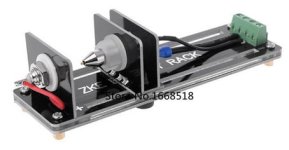flippy
1 MW
- Joined
- Aug 12, 2015
- Messages
- 2,351
goatman said:havent found a genuine hg2 yet
because you need to look for HG4. its the "rebranded" HG2 after a couple morons blew their hands off.
goatman said:havent found a genuine hg2 yet
Are the only HG2s available salvaged or fakes ... can still retrieve the original LG HG2 datasheet, but LG HG4 datasheet isn't available when googling :?goatman said:havent found a genuine hg2 yet
Why it's "rebranded" HG4 instead of HG3 was because it was two morons, not just one :wink:flippy said:because you need to look for HG4. its the "rebranded" HG2 after a couple morons blew their hands off.

That and other little changes just makes it all the more difficult to separate the real from the counterfeit. The Chinese are some of the best when it comes to a counterfeit that passes as the real McCoy. How many DIYers are going to take the time required (as evidenced in the above article) to identify a grade B (fake A) 25R cell? Even if they do what lengths will they have to go too to prove the cells they received are fakes and want their money back. Then again who do they have to blame but themselves when they bought cells at what seemed to good to be true.flippy said:it can just be different type of steel casings.
flippy's suggestion certainly has merit ... thus my 25R posts. The new 25R date code (and generation 5, 6 or 8 ) on the shrink label will hopefully stymie Chinese 25R fakes from flooding the market. The real 25Rs like 25R8 was $4.50, but no longer available at that price. Price increases on all Li-ion cells is blamed on car manufacturers demand and Suez Canal Blockage. It will take time (if ever) to see genuine 25R8s at $4.50 again like at Bulk Battery ... https://www.bulkbattery.com/batteries/18650/samsung-25r-18650-2500mah-20a-battery/ ... or 25R6 at LIION Wholesale was $5.99 ... https://liionwholesale.com/collections/batteries/products/samsung-inr18650-25r-battery-genuine-tested-20a-2500mah-flat-top-wholesale-lot?variant=31113493053509 ... now out of stock. Customer service rep expects delivery of 5000 25R mid May, but not sure if 25R6 (as previously in stock) at $5.99 or newer 25R8 at $6.99.flippy said:just keep your 25R, strip the packs apart, use a dremel with a blue grind wheel to clean up the spot welds, but a ton of new 25R's and equalize the old cells with the new cells so each P group has the same amount of old cells, then top off with new ones.
if you actually babied your 25R's with slow charging i doubt they have been hurt in their capacity much. no need to toss good cells if you are looking to save a buck and are willing to spend some hours stripping and cleaning cells.
pro tip: make the pack 20S and halve your current. :wink:
(the controller does not care about volts, just amps. more volts means less amps means more efficient.)
Pajda said:Fake vs B-grade cells
eMark said:25R8s are again in stock at their (Bulk Battery) Battery Store ... https://www.18650batterystore.com/ ... with the current price (as with other US suppliers like IMR) at $6.99. Their customer service rep estimated purchase of at least 100 25R8 cells would be $650.
I don't know if it's just good timing or what, but I happened across some 21700 Tesla/Panasonic cells on ebay for an incredible $3/cell at bulk! Based on the seller's flawless rep, it looks like a good, low-risk acquisition. Check it out if you're interested. Even comes with free cell holders, crazy. Looks like I'll be assembling a second pack at 20S7P for long range jaunts.





DCIR 10s method by Samsung SDI
DC impedance is measured at 50% SOC(state of charge) state. (I am using 25 °C)
After Standard charge, discharge with constant current of 0.5C for 1hr followed by 30min rest time (Check voltage at this time – V1). Discharge with constant current of 0.5C for 30sec (and check voltage at 10sec – V2)
Initial DC impedance = (V1-V2)[mV] / 0.5C[mA]
Pajda said:I am just saying that using a clamps is not reliable method, I know about many examples (myself included) when the measurement was significantly affected by this. The only reliable plane contact is the screw secured connection.
Pajda said:Results from DCIR 10s method are close to the ACIR 1kHz method.
1. Since the DCIR-10s and the ACIR 1kHz are close, do you think it's worthwhile to even bother calculating the 10s method and instead use the AideTek SM8124A (something I already have) at 50% SOC every 25 or 50 cycles after rest period? If all I care about is the trend, do you think the ACIR test would be sufficient in revealing it?
2. What do you think about the EB Tester software "Battery Resistance Test"? This would be even more convenient to program 1C or even 10A/15A discharge and record resistance at the same 50% SOC to develop a similar degradation curve. While it doesn't appear to output csv data with this test, it looks like it just applies current over 1 second before calculating the resistance.
Pajda said:This is not about the method itself (if the method principle is clearly described) but about people "laziness"...
Pajda said:I added sample recipe for EBC-A20 to attachments, you only need to rename it from .txt to .stp
I think the biggest problem is that you think about it too much :wink: . We can argue for a long time about the advantages and disadvantages of each method but at the end we can conclude that using a larger hammer is also a plausible method for dealing with problems.vanturion said:Thinking about it some more
Pajda said:I think the biggest problem is that you think about it too much :wink: . We can argue for a long time about the advantages and disadvantages of each method but at the end we can conclude that using a larger hammer is also a plausible method for dealing with problems.
So maybe unwanted advice is to choose any method you like (which is reasonably repeatable) and begin to compare measured results on a relative basis. I mean "under this particular test method shows best results this sample..." Forget absolute values.
Pajda said:...If you look into docware's Well of Wisdom starting on page 4, you will find his DCIR tracking results for the most interesting cells on the marked and you should notice that almost all of them have a wide plateau of almost constant DCIR around the 50% SoC. So actually I do not expect a significant error in getting "absolute" value of DCIR due to the SoC drift caused by the lost of the capacity during cycle life test...
